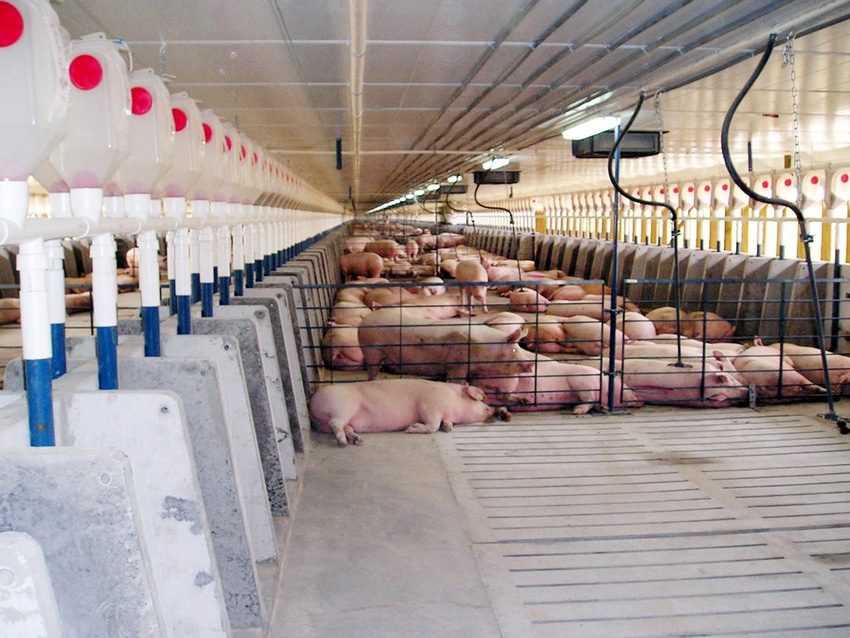Swine barn upgrades to solve regulatory and efficiency needs
The rising cost of new construction will results in producers upgrading equipment as a more cost-effective solution to gain efficiency.
March 4, 2021

Sponsored Content
Confronted with aging equipment and regulatory change coming in 2022, many hog producers are expected to remodel or make upgrades to their barn this season. That’s the expectation of several dealers for AP, the AGCO brand that produces equipment used in swine production.
“The average age of barns is getting older,” said J.D. Myers, national sales manager of swine projects, with QC Supply based in Schuyler, Neb. “The farming economy has gotten better and producers are looking to reinvest in their barns in 2021.”
The biggest issue driving the improvements, the dealers say, is California Proposition 12, which requires producers to provide more space for breeding pigs, egg-laying hens and calves raised for veal. Effective Jan. 1, 2022, a minimum of 24 square feet of usable floor space must be provided per gestating sow for pork products used in the state.
“Proposition 12 compliance will promote remodeling or new layouts of many gestation barns,” said Rick Thomas, president of Ag Property Solutions in Emmetsburg, Iowa. “The configuration of animal flow is different. Some producers may also resize or reduce farrowing spaces, because the new regulation will reduce the number of animals in many gestation barns.”
Improving Efficiency
Other expected upgrades this season are meant to provide improved efficiencies and a more consistent barn environment. This includes upgraded ventilation equipment, such as fans and ceiling inlets, as well as new heaters. These types of upgrades may be required in new integrator contracts.
Dealers say other work could include continued conversion to group housing in gestation barns, more modern feeding and watering systems, larger pen sizes in finishing barns and addressing structural issues such as roof repairs, steel replacement and repairing or replacing failing concrete slats.
“A lot of hog barns were built 25 years ago, and depending on how well they were built and maintained, there can be a lot of equipment that needs to be replaced,” said Barrie Luers, general manager of Midwest Livestock Systems, LLC in Beatrice, Neb.
Kevin Rath, AP district manager for Nebraska and surrounding area, says upgrading to a new barn controller, such as AP’s EDGE system, can pay huge dividends in terms of gaining efficiency. “A more sophisticated controller supports better decision-making and, with remote monitoring, farm management can cover more ground even when they’re away from the operation.”
Rath said feed bin monitoring technology, such as a feed weighing system, also represents a good efficiency investment. “The largest expense in swine production is feed, but only a fraction of feed bins are currently using a monitoring system,” he said. “Producers may want to consider adding this technology because you can’t manage what you don’t measure.”
Planning Is Key
Regardless of the type of project, the dealers and Rath emphasize the importance of working closely with your dealer or contractor for proper planning and timing. Their recommendations include:
Begin with a good understanding of the project details upfront and what you want to accomplish. The best remodel is a team effort, with the producer and contractor working and communicating together.
Be realistic about how long the project will take. Begin the planning process two to three months before the anticipated start date to allow enough lead time for design, product availability and labor.
Ensure that design plans match the criteria of your integrator contract. Build time into the planning process to include integrators.
Build flexibility into the plan. Think of what-ifs, so if any challenges should arise later, changes can made to keep the operation viable.
Allow for contingencies in the budget. Most remodeling projects bring a surprise or two, and a good plan will make it easier to deal with those.
Rath says while some new barn construction is likely this year, the focus will be on improvements to existing structures. “We’ve seen significant increases in building costs, such as steel, lumber and concrete, compared to the more modest increases in barn equipment,” he said. “Many swine producers will see upgrading their equipment as a more cost-effective solution.”
For more information, producers can contact their swine equipment dealer or visit www.automatedproduction.com.
About the Author(s)
You May Also Like



